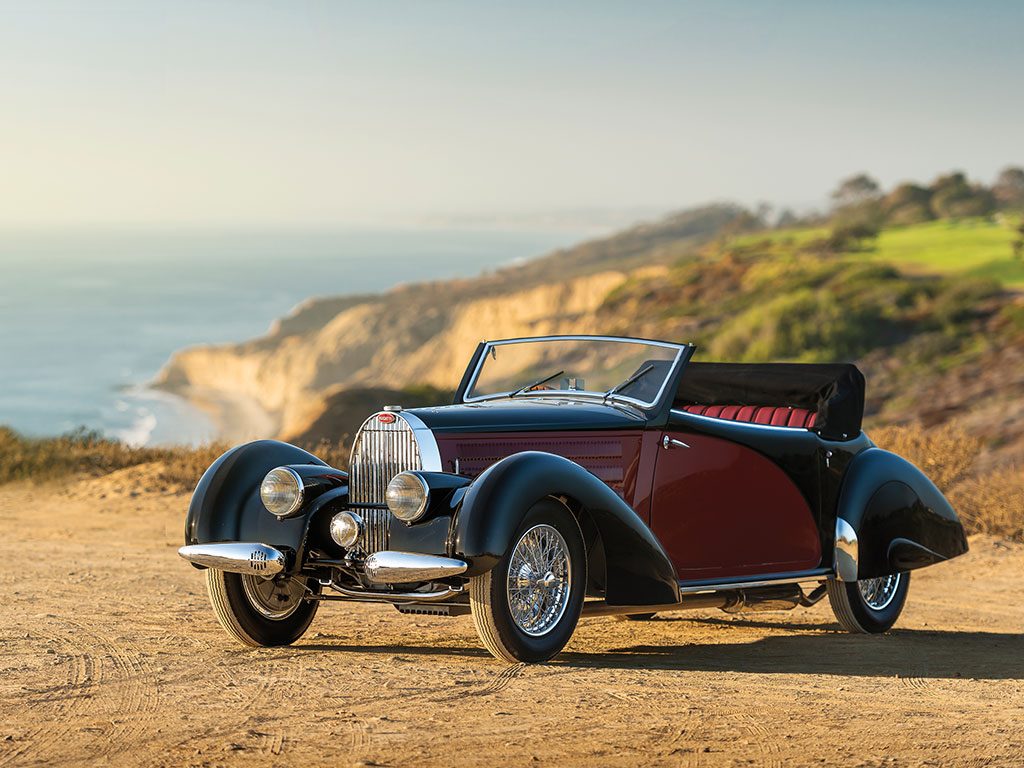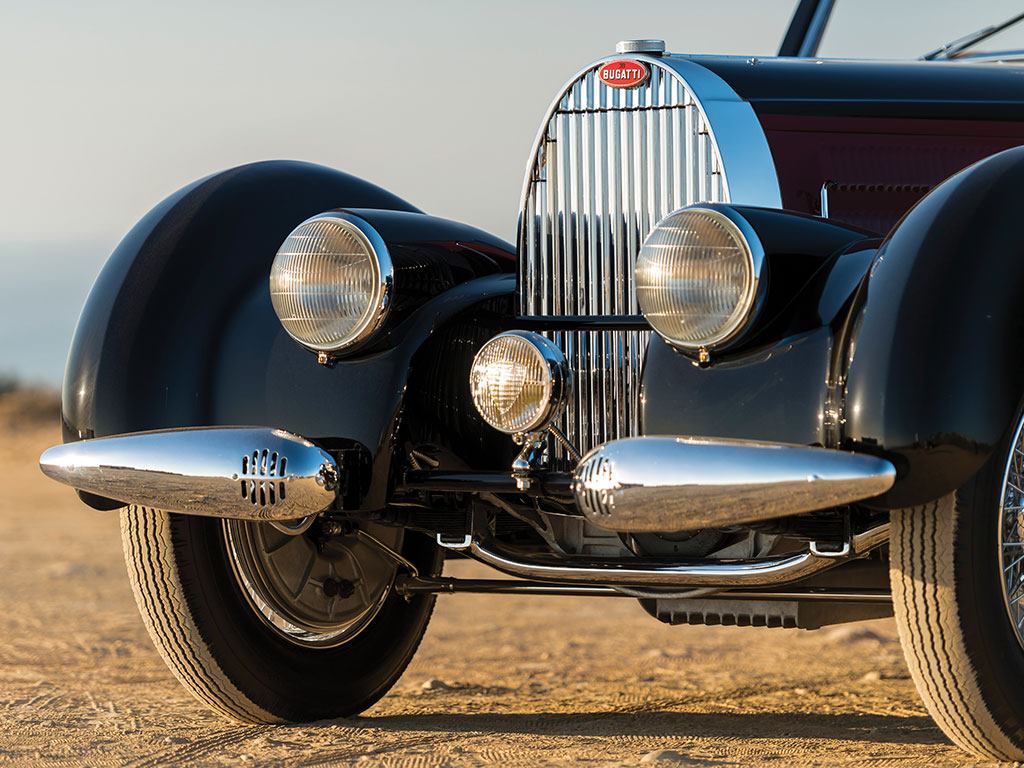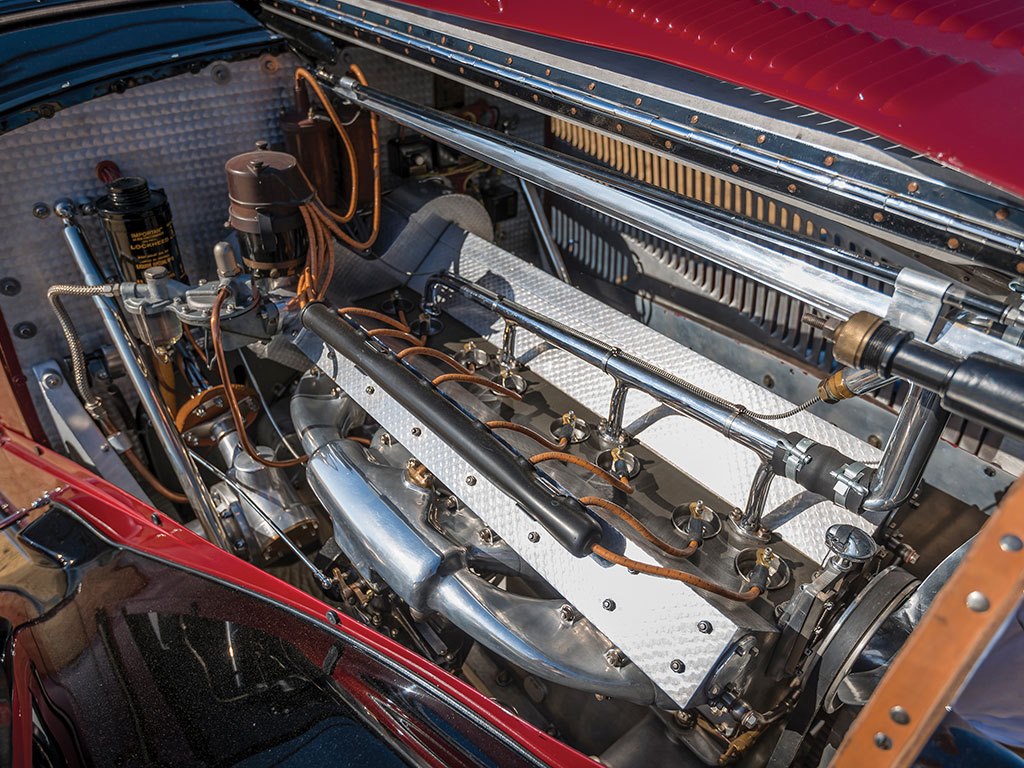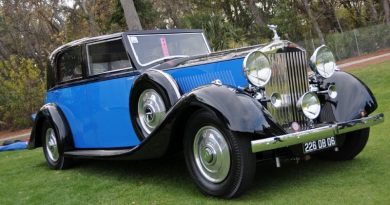1939 Bugatti Type 57 Cabriolet
Many manufacturers during this time produced multi-purpose vehicles that could be driven to a race track, raced, and then driven home. The Bugatti Type 57, however, was solely a road-going vehicle and is considered the most celebrated of all non-racing Bugattis. Even though the Type 57 was strictly a road-going vehicle, a racing version was created for the 1937 24-Hours of Le Mans race. This vehicle, based on the Type 57S chassis and named the 57G, won the race. A supercharged version was created for the 1939 Le Mans race and also was victorious. This is the legacy of the Bugatti heritage and the quality and innovative designs that were truly masterpieces in all respects.

In 1934, the Type 57C entered the scene, a project headed by Jean Bugatti, the son of Ettore Bugatti. The vehicle centered around refinement while focusing on the values that had made Bugatti successful.
Three ‘factory’ bodies were available and consisted of the Ventoux, a two-window and four window version, the Stelvio, and the Atalante. All of the Atalante bodies were produced and all were done in-house. The Atalante was named after peaks in the Alps and is one of the most exclusive bodystyles ever produced by Bugatti.

The Type 57S version was a ‘sportier’ version of the Type 57. The chassis was shorter, with the rear axle running through the frame. A slightly tuned engine with higher compression and a dry sump lubrication helped increase the performance of the car. The front and rear axles received de Ram shock aborbers, replacing the Hartford Friction dampers.
The Type 57SC was a combination of the 57C and 57S. The engine produced between 200 and 220 horsepower.

On August 11, 1939 while testing a Type 57C tank-bodied racer near Molsheim, Jean Bugatti was killed. This was the same day as the start of the 2nd World War, which inevitably meant that the race Jean was preparing the vehicle for would never be run.

This rare Type 57 cabriolet was bodied by Letourneur et Marchand—one of the few custom coach-builders whose work matched Jean Bugatti’s own designs for grace and beauty. Chassis 57587 is the first of eight cabriolets built. This is design number 5877 with chassis number 57587, the first built.

The build process, all the way from the original order placed by Baron Georges de Cocq, took place from March to July in 1939. Numerous fascinating letters record the car’s early life, with many unique details incorporated to suit the Baron’s needs. Letourneur et Marchand, at the Bugatti Paris agency’s request, crafted unique rear bumpers to the Baron’s design and even fitted a special holder above them for his fishing rod! After these modifications the car was exhibited in the Paris showroom from October 1938 to March 1939.
The Bugatti accompanied the Baron and his family to the South of France. It remained in Southwest France until 1956, when, it was sold by the Baron’s widow, Emilienne, to Jean Laurent in Paris. In 1957, chassis 57587 was sold by Parisian Bugatti dealer Armand Beressi to Dr. Milton Roth of Long Beach, California. It then passed through several ‘Bugattistes’ ownerships. In 1962 the car was recorded in the Bugatti Register and Data Book. It was then sold to a longtime Bugatti Club member, and then resold again in 1979.
After Robert Owens of Haverford, Pennsylvania acquired the cabriolet he chose to give it a concours restoration. Owens diligently sought out the original engine and in 2003 he finally acquired and reunited it with the car. The Type 57 was restored back to its original condition. It has since passed through several owners.

In 2004 the car was exhibited freshly restored at the Pebble Beach Concours d’Elegance.




